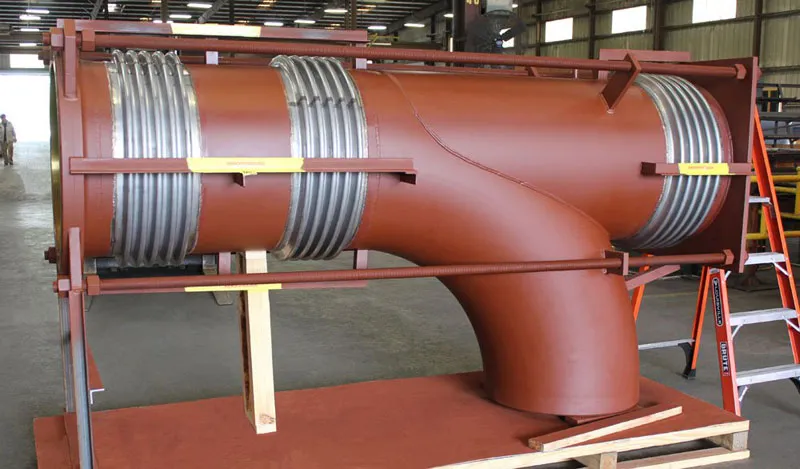Metal expansion joints are compensating elements for thermal expansion and relative movement. They consist of one or more metal bellows, connectors at both ends, and tie rods that depend on the application. Expansion joints have usage in various sectors, like energy productions, chemical industry, water treatment, oil and gas. unnecessary vibrations in systems can damage the system as well as the surrounding equipment severely. Metal expansion joints help in isolating these vibrations, as well as dampening noise and pressure surges. There are different types of metal expansion serving different purposes, which are explained below.
Different types of Metal Expansion joints
Gimbal metal expansion joints
Gimbal expansion joints are designed to permit angular rotation in any plane by the use of two pairs of hinges affixed to a common floating gimbal ring. Simply, a double gimbal expansion joint consists of two single gimbal expansion joints and an intermediate pipe connects them to each other. The advantage of this arrangement is the ability to absorb a large lateral movement in any plane at each end.

Hinged metal expansion joints
A hinged expansion joint is a metallic assembly that can rotate in a single plane, used to absorb changes resulting from piping thermal expansion or contraction. They include hinges, attached to the expansion joint ends with a pair of pins, which allow angular movement in a single plane, restrain the pressure thrust, and prevent the expansion joint from deflecting axially, either in extension or compression.It is suggested that the hinges should be used in sets of two or three.The expansion joint hinges provide for angular movement and will resist pressure thrust forces.

Universal metal expansion joints
Universal expansion joints contain two bellows with multiple convolutions joined by a center pipe or spool. These joints, also known as double or tandem bellows expansion joints are used for the purpose of absorbing any combination of axial, lateral, or angular movements in a piping system.
When lateral movements are too excessive for a single axial expansion joint to accommodate or when there is a limitation on the amount of lateral forces allowed on the connecting piping or equipment, universal expansion joints are installed to accommodate these movements.

Inline pressure balanced metal expansion joints
In-line pressure balanced expansion joints are designed to absorb externally imposed axial movement without imposing pressure loading on the system. This is accomplished by using two bellows both at line pressure tied together and acting in opposite directions. It is used where pressure loading on the piping or equipment is not acceptable.While the joint balances out the pressure forces , the force required to move the joint itself is not balanced. When axial deflections exist, and anchoring is impractical for structural or economic reasons, such as high in the air or short straight pipe runs between two large vessels, the in-line pressure balanced pipe expansion joint is a powerful solution to a difficult design problem.

Elbow pressure balanced metal expansion joints
Elbow pressure balanced expansion joints or corner relief expansion joints are the types of pressure balanced expansion joints, which are used where pressure thrust forces on equipment or piping is unacceptable and the direction of the pipe system also changes. In order to understand the primary advantage of an elbow pressure balanced expansion joint, it is important to understand how ordinary expansion joints influence the pipe system, in which it is installed.

Axial expansion metal expansion joints
Axial expansion joints are designed to accept movements of extension and compression in the longitudinal direction. When the expansion joint compresses or extends, it causes the whole length to either increase or decrease. If in a piping system, axial expansion joints are designed without restraining bars, the pipeline will require fixed points and proper anchors to overcome the reaction forces generated by the bellows.

Lateral expansion metal expansion joints
A lateral expansion joint works in the same way a hinged expansion joint does. It utilizes the ability of the bellows to rotate in an angular direction. The lateral movement capability is the result of the angular rotation of the bellows and their center to center distance. The longer the distance between the bellows, the larger is the movement capacity

Pressure switch metal bellows metal expansion joints
Pressure switches are designed to make electrical contact when a set pressure is reached. These switches can be designed to close or open on the pressure rising or falling. Many industries including automotive and diesel use these types of switches to maintain optimum system operation.

Image Source: flexpertbellows.com, macoga.com, sacome.com, usbellows.com, pipingtech.com, witzenmann.com, flexomat.de, bellowexpansionjoints.com, wikipedia


